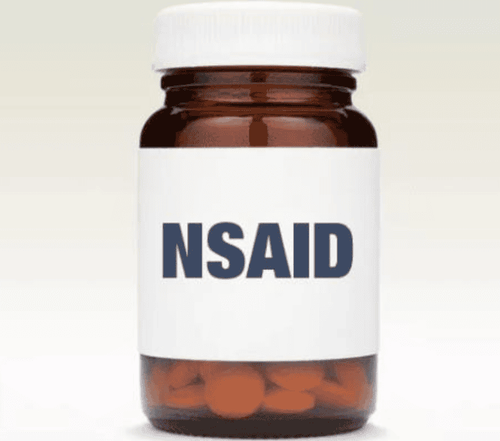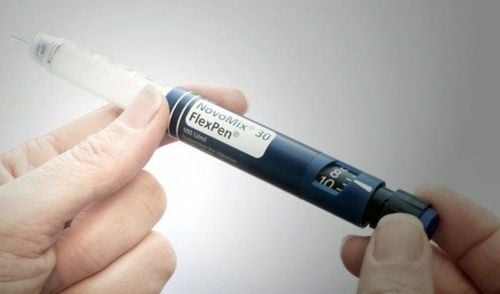This is an automatically translated article.
Cataflam 25 is made in the form of tablets, with the main ingredient being diclofenac potassium. The drug is used to treat pain, painful infections,...1. Uses of the drug Cataflam 25
What is Cataflam? The drug has the active ingredient diclofenac potassium, prepared with a strength of 25mg or 50mg. This article mainly deals with the drug Cataflam 25.Cataflam contains the potassium salt of diclofenac - a non-steroidal compound with analgesic, anti-inflammatory and antipyretic properties. This ingredient helps inhibit the biosynthesis of prostaglandins - the cause of inflammation, pain and fever. Cataflam tablets have a rapid onset of action and are suitable for the treatment of acute painful and inflammatory conditions. Cataflam is an effective pain reliever for moderate and severe pain.
Cataflam is indicated for the short-term treatment of the following acute conditions:
Post-traumatic pain, swelling and inflammation (sprain); Post-operative pain, swelling and inflammation (dental surgery, orthopedic surgery); Pain and inflammation in gynecology (primary dysmenorrhea, adnexitis); Migraine pain ; Spine pain syndrome; Rheumatism is not in the joints; Supportive treatment in severe painful inflammatory infections in the ear - nose - throat such as pharyngitis, tonsillitis, otitis. Contraindications to the use of the drug Cataflam:
People with hypersensitivity to the active ingredients or excipients of the drug; The patient is suffering from ulceration, bleeding or perforation of the gastrointestinal tract; Pregnant women are in the last 3 months of pregnancy; Patients with severe liver failure, severe heart failure, severe renal failure; Patients with asthma, urticaria or acute rhinitis caused by acetyl salicylic acid or other NSAIDs.
2. Usage and dosage
Usage: Orally. Patients should swallow tablets whole with water, do not break or chew tablets, should be taken before meals.Dosage:
For the general patient group:
The starting daily dose is 100 - 150mg. In milder cases, a dose of 75-100 mg/day is sufficient. The total daily dose should be divided into 2 - 3 separate doses if applicable; For primary dysmenorrhea: The daily dose should be individually adjusted, usually 50 - 150 mg. The usual starting dose is 50mg. If necessary, an initial dose of 100 mg is used, up to a maximum of 200 mg/day over the course of several menstrual cycles. The drug should be started at the first symptom, depending on the symptoms, treatment can be continued for several days; For migraine: The starting dose should be 50mg when symptoms of pain are about to appear. If there is no relief within 2 hours of the first dose, an additional dose of 50 mg may be given. If necessary, the patient can take additional doses of 50mg every 4-6 hours, taking care not to exceed the total dose of 200mg/day. For children:
Do not use Cataflam for children under 14 years old. For the treatment of children under 14 years of age, mainly diclofenac 12.5mg and 25mg oral drops or suppositories are used. For adolescents from 14 years of age and older, a dose of 75-100mg/day can be used; Do not exceed a maximum dose of 150mg/day, the total daily dose should be divided into 2 - 3 separate doses if applicable; The effectiveness of Cataflam in the treatment of migraine attacks in children and adolescents has not been established. For people 65 years of age and older:
No need to adjust the starting dose. For patients with cardiovascular disease or cardiovascular risk factors:
The use of Cataflam is not recommended in patients with cardiovascular disease or uncontrolled hypertension. If necessary, this group of subjects should be treated with Cataflam only after careful consideration at doses not exceeding 100mg/day if treated for more than 4 weeks; Because the cardiovascular risk of diclofenac (the main ingredient of Cataflam) can increase with dose and duration of use, the lowest effective daily dose should be used for the shortest possible time. Patients should be reassessed periodically, especially when treatment is continuous for more than 4 weeks; Patients should be alert to symptoms of arterial thrombosis such as difficulty speaking, chest pain, shortness of breath or shortness of breath, and weakness. In this case, the patient should see a doctor immediately. For patients with liver and kidney failure:
Cataflam is contraindicated in patients with severe liver failure. Use with caution in patients with mild to moderate hepatic impairment; Cataflam is contraindicated in patients with severe renal impairment. Use with caution in patients with mild to moderate renal impairment. Overdose: When an overdose of diclofenac (the main ingredient of the drug Cataflam), patients may experience vomiting, diarrhea, gastrointestinal bleeding, dizziness, tinnitus, convulsions. In cases of significant poisoning, the person may develop acute kidney failure or liver damage. Patients received supportive and symptomatic treatment for complications of hypotension, renal failure, digestive disorders, convulsions and respiratory failure.
Missed dose: If you miss a dose of Cataflam 25, take it as soon as you remember. If it is almost time for the next dose, skip the missed dose and follow the normal schedule.
3. Cataflam 25 . side effects
Some side effects patients may experience when using Cataflam (both Cataflam suppositories or other dosage forms of diclofenac) include:Blood and lymphatic system disorders: Leukopenia, thrombocytopenia, anemia blood (hemolytic anemia and aplastic anemia), agranulocytosis; Immune system disorders: Hypersensitivity, anaphylactic reactions (including hypotension and shock), angioedema (including facial edema); Psychiatric disorders: Depression, insomnia, disorientation, irritability, nightmares, psychosis; Nervous system disorders: Dizziness, headache, somnolence, paresthesia, convulsions, anxiety, memory impairment, tremor, aseptic meningitis, taste disturbance, cerebrovascular accident; Eye disorders: Visual disturbances, double vision, blurred vision; Ear and labyrinth disorders: Dizziness, tinnitus, hearing loss; Heart disorders: Myocardial infarction, heart failure, chest pain, palpitations; Vascular disorders: Hypertension, hypotension, vasculitis; Respiratory, thoracic and mediastinal disorders: Asthma, dyspnea, pneumonia; Digestive disorders: Nausea, vomiting, dyspepsia, diarrhea, flatulence, abdominal pain, loss of appetite, gastritis, gastrointestinal bleeding, hemorrhagic diarrhea, vomiting blood, black stools , peptic ulcer disease, colitis, constipation, glossitis, stomatitis, esophageal disorders, pancreatitis, diaphragm-like intestinal stricture; Hepatobiliary disorders: Increased transaminases, hepatitis, jaundice, liver disorders, fulminant hepatitis, liver necrosis, liver failure; Skin and Subcutaneous Tissue Disorders: Rash, urticaria, urticaria, erythema, eczema, Stevens-Johnson syndrome, erythema multiforme, toxic epidermal necrolysis, alopecia, exfoliative dermatitis , photosensitivity, purpura, pruritus; Renal - urinary disorders: Hematuria, acute renal failure, proteinuria, interstitial nephritis, nephrotic syndrome, renal papillary necrosis; Systemic disorders and administration site conditions: Edema.
4. Be careful when using Cataflam 25
Some issues users should note before and while using Cataflam 25:Gastrointestinal effects Hemorrhage, ulceration, and perforation of the stomach and intestines can occur in people using anti-inflammatory drugs with active ingredients. diclofenac. If bleeding or gastrointestinal ulceration occurs in a patient being treated with Cataflam 25, the drug should be discontinued immediately. At the same time, special care and supervision should be exercised when prescribing Cataflam to patients with gastrointestinal disorders or a history suggestive of ulceration, bleeding, or perforation of the gastrointestinal tract. To reduce the risk of toxicity, initial and maintenance therapy should be initiated at the lowest effective dose. At the same time, the use of drugs in combination with protective agents should be considered.
Cardiovascular Effects Treatment with diclofenac, especially at high doses and long-term, may increase the risk of serious cardiovascular thrombosis, including myocardial infarction and stroke. Therefore, the use of Cataflam is not recommended in patients with cardiovascular disease (ischemic heart disease, congestive heart failure, peripheral arterial disease) or uncontrolled hypertension).
Hematological effects The use of Cataflam 25 is only recommended for a short time. If used for a long time, the patient's platelet count should be monitored. Since Cataflam may inhibit platelet aggregation, patients with impaired hemostasis should be carefully monitored.
Effects on the respiratory system In patients with asthma, swelling of the nasal mucosa, seasonal allergic rhinitis, chronic obstructive pulmonary disease or chronic respiratory infections, there may be a risk of drug reactions. Cataflam with exacerbations of asthma, Quincke's edema or urticaria. Therefore, it is necessary to be careful with this group of patients, prepare emergency facilities. In particular, attention should be paid to monitoring the health of patients who have been allergic to other substances.
Effects on the Hepatobiliary System Close medical supervision is required when prescribing Cataflam 25 to patients with impaired liver function because the drug may worsen liver disease. The drug may increase the value of one or more liver enzymes. Therefore, it is necessary to monitor liver function regularly, if symptoms related to liver disease or other manifestations (rash, eosinophilia) are present, use of Cataflam should be discontinued. Hepatitis can occur with the use of the drug without warning symptoms. At the same time, Cataflam should be used with caution in patients with porphyria because of the potential for acute exacerbations.
Skin reactions When using Cataflam 25, patients may experience serious skin reactions such as exfoliative dermatitis, toxic epidermal necrolysis, Stevens-Johnson syndrome,... At first signs If skin rash, mucosal lesions or other signs of hypersensitivity occur, the drug should be discontinued immediately.
Renal effects Treatment with Cataflam can cause fluid retention and edema, so caution should be taken when administering the drug to people with impaired heart and kidney function, a history of hypertension, the elderly, and those receiving treatment. concurrently with diuretics or drugs affecting kidney function, people with extracellular fluid loss,... In the above cases, when taking the drug, it is necessary to monitor kidney function regularly.
Precautions in the elderly Use caution when administering Cataflam in the elderly. The lowest effective dose should be used in elderly, frail, and low-weight patients.
Masking of signs of infection Cataflam can mask signs of infection, so it should be used with caution.
Driving, operating machines People with visual disturbances, dizziness, dizziness, somnolence or other central nervous system disorders when taking Cataflam medicine should not drive or operate machinery.
Pregnancy and Lactation Cataflam should not be used during the first and second trimesters of pregnancy unless the benefits outweigh the risks. Cataflam is contraindicated in the last 3 months of pregnancy. In addition, Cataflam is not recommended for use in nursing women to avoid adverse effects on children.
5. Cataflam drug interactions 25
Some drug interactions of Cataflam include:Other non-steroidal anti-inflammatory drugs (NSAIDs) and corticosteroids: Concomitant use of Cataflam with these drugs may increase gastrointestinal side effects; Anticoagulants and antiplatelet agents: Caution should be exercised when co-administered with Cataflam because of possible increased risk of bleeding; Selective serotonin reuptake inhibitors (SSRIs): Concomitant use with Cataflam increases the risk of gastrointestinal bleeding; Antidiabetic drugs: Blood sugar should be monitored as a precaution when Cataflam and antidiabetic agents are used concurrently; Phenytoin: Concomitant use of phenytoin with Cataflam will increase phenytoin levels, so it is necessary to control phenytoin plasma concentrations; Methotrexate: Caution should be exercised when co-administering Cataflam, less than 24 hours before or after methotrexate therapy because blood levels of methotrexate may increase and its toxicity may increase; Cardiac Glycosides: In patients, concomitant use of cardiac glycosides and Cataflam may aggravate complications of heart failure, decrease GFR, increase plasma glycoside concentrations; Tacrolimus: Concomitant use of Cataflam with tacrolimus increases the risk of nephrotoxicity; Colestipol and cholestyramine: As agents that slow or decrease the absorption of diclofenac, diclofenac should be administered at least 1 hour before or 4-6 hours after taking colestipol/cholestyramine. When prescribed Cataflam, patients should inform their doctor about their medical history, the drugs they are taking. At the same time, if you experience any side effects, the patient should immediately notify the doctor for timely support.
Please dial HOTLINE for more information or register for an appointment HERE. Download MyVinmec app to make appointments faster and to manage your bookings easily.













